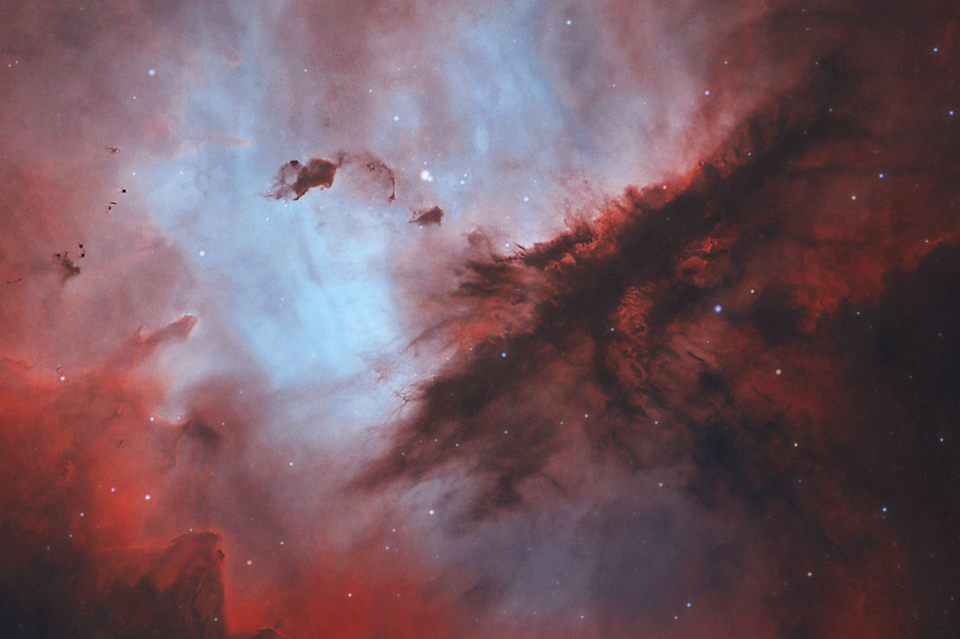
Characterization and Understanding of Molecular Diversity
The physico-chemical conditions of astrophysical environments can be deduced from the observation of light emitted by these regions. The analysis of observed spectral lines provides information about the nature and abundance of molecular species present. Comparing the observed abundances with those predicted by chemical models then allows us to trace the evolution of matter and identify the processes responsible for the synthesis of molecules.
The reliability of such an analysis heavily depends on the data available regarding the fundamental mechanisms involved in the formation of spectral lines : population of molecular quantum states through radiative and collisional excitation (with H, He, H₂, and electrons), chemical reactivity, and photo-induced processes (in the gas phase or on the surface of grains). Some of these data can be determined precisely through experimental measurements. When this is not possible, the process under study must be simulated numerically using various theoretical approaches.

